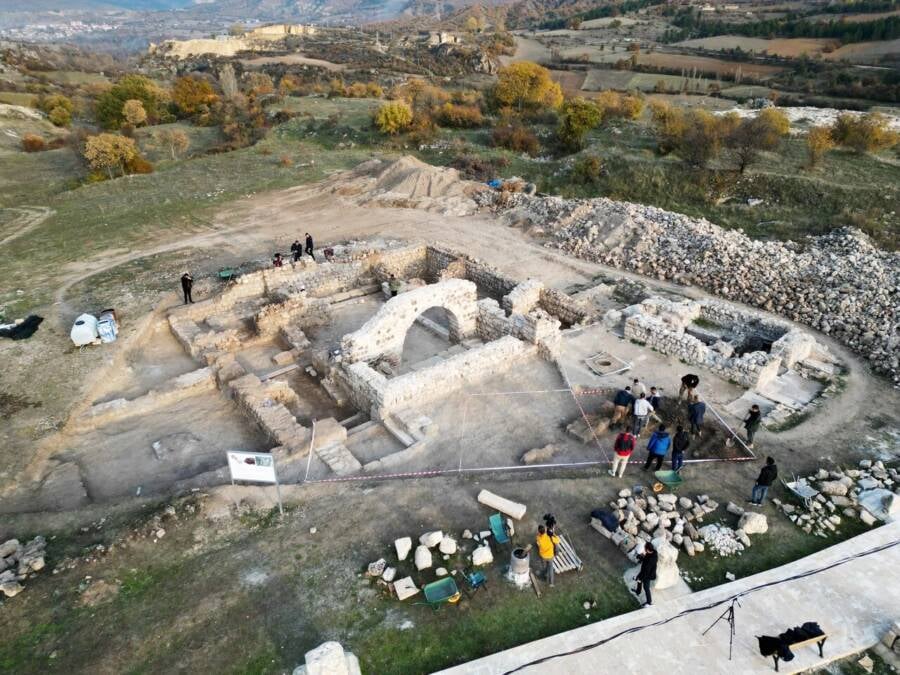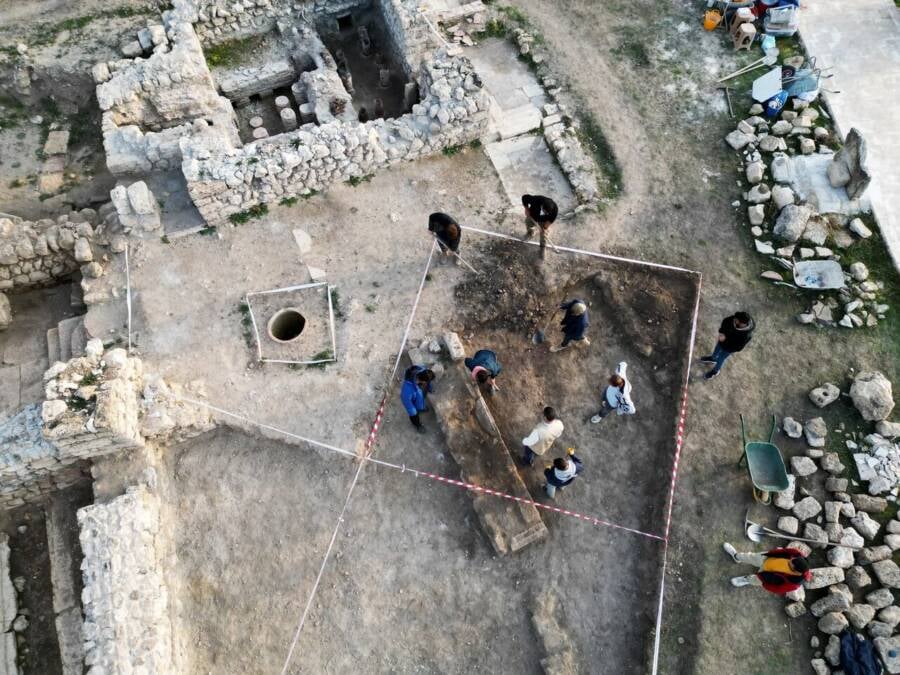Archaeologists excavating the ancient city of Hadrianopolis in Türkiye uncovered a 1,600-year-old pendant depicting Solomon riding on horseback and attacking the Devil alongside an inscription that reads, "Our Lord defeated evil."

Karabük UniversityA detailed view of the 1,600-year-old pendant featuring Solomon spearing the Devil while riding on horseback.
Archaeologists in Türkiye have made an astonishing discovery in the ancient city of Hadrianopolis: a 1,600-year-old pendant depicting Solomon spearing the Devil while on horseback.
This rare artifact, which also bears inscriptions listing the names of archangels and declaring “Our Lord defeated evil,” provides a glimpse into the beliefs and customs of the city’s Byzantine inhabitants in the fifth century C.E.
Hadrianopolis was a thriving center of cultural exchange from 3500 B.C.E. through the early Byzantine period. Recent excavations led by Dr. Ersin Çelikbaş have unearthed baths, churches, and other structures, but the discovery of this pendant has highlighted the city’s role as both a religious hub and a military stronghold.
Currently, excavations at the site continue to uncover details about the once-flourishing city of Hadrianopolis.
Archaeologists Discover The Solomon Amulet At The Ancient City Of Hadrianopolis

AA PhotoThe ancient city of Hadrianopolis, where the pendant was found.
Recently, archaeologists led by Dr. Ersin Çelikbaş from Karabük University in Türkiye and the Heritage to the Future Project of the Ministry of Culture and Tourism excavated parts of the ancient city of Hadrianopolis.
Hadrianopolis, located in Karabük, was founded during the late Chalcolithic era around 3500 B.C.E. and lasted until the early Byzantine era. It was referred to as the “Zeugma of the Black Sea” (due to the similarities between the mosaics in Hadrianopolis and those in Türkiye’s ancient city of Zeugma) and served as a center for cultural exchange in the ancient world.
In the course of their excavations, researchers have uncovered baths, churches, villas, a theater, and a city wall. However, their most important find might be this small pendant.

Karabük UniversityArchaeologists work at the excavation site in Hadrianopolis.
The 1,600-year-old pendant bears a depiction of Solomon on horseback spearing the Devil. Çelikbaş explained the rarity of this finding in a press release from Karabük University:
“No similar examples have been found in this geography before. This pendant, used as an amulet, draws attention with the inscriptions on both sides and the depiction on it. The amulet depicts Solomon on a horse, holding a spear, defeating the Devil. Solomon is an important figure in all three holy religions.
While he is mentioned as a ruler in the Torah and the Holy Bible, he is also accepted as a prophet in Islam. The depiction of Solomon on this necklace surprised us and revealed the importance of the artifact for Anatolian archaeology. The phrase, ‘Our Lord defeated evil,’ is written on the necklace.”

Karabük UniversityThe inscription next to the rendering of Solomon reads, “Our Lord defeated evil.”
The artifact’s inscriptions and imagery suggest that it may have been worn as a protective charm, likely by soldiers in the region.
Hadrianopolis: An Ancient Center Of Religious And Military Power
Beyond its religious significance, Hadrianopolis played a role in regional defense. Previous excavations revealed the presence of a cavalry unit nearby, further connecting the pendant’s symbolism to the city’s military history.
“In our previous excavations, we had determined the existence of a cavalry unit here with concrete data. Hz. Süleyman [Solomon] is also known as the commander of the armies. We understand that he was also thought of as a protective figure for the cavalrymen of the Roman and Byzantine periods in Hadrianopolis,” Çelikbaş stated.

AA PhotoExcavations underway at Hadrianopolis.
The pendant also features inscriptions of the names of four archangels, Azrael, Gabriel, Michael, and Raphael.
“No similar example to this amulet has been found in Anatolian archaeology to date,” Çelikbaş elaborated. “Only a similar depiction has been unearthed in Jerusalem… The presence of similar works in these two distant geographies indicates that Hadrianopolis was an important religious center in ancient times.”
In particular, the pendant is indicative of inhabitants’ religious views and priorities, as it highlights their belief in divine protection and the importance of safeguarding people in their community.
“With the pendant’s inscriptions and unique depiction, it provides us with insights into the beliefs and practices of the time,” Çelikbaş concluded.
After reading about the Solomon pendant, dive into the story of what angels in the Bible would actually look like. Then, read about the historical research into when the Bible was written.





